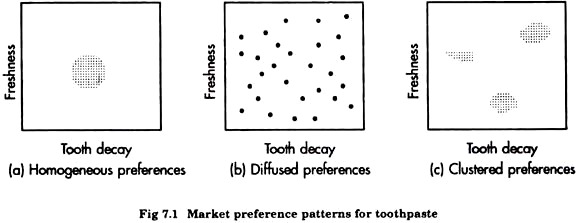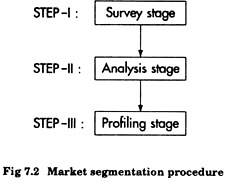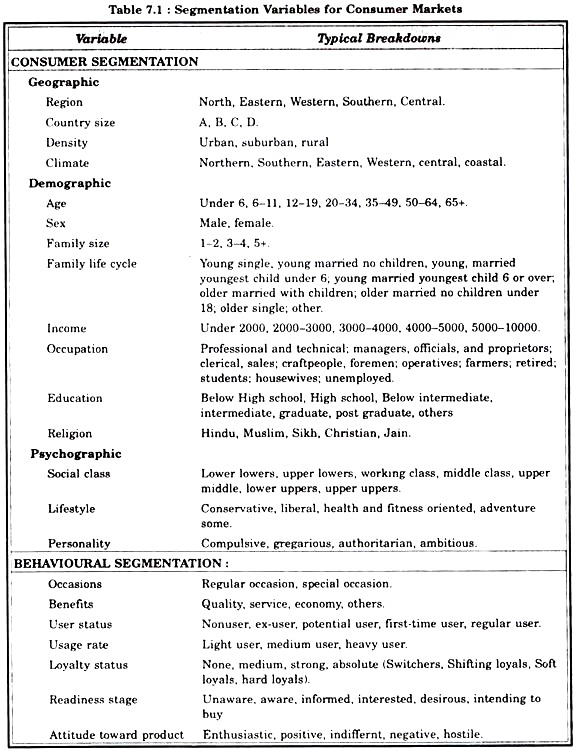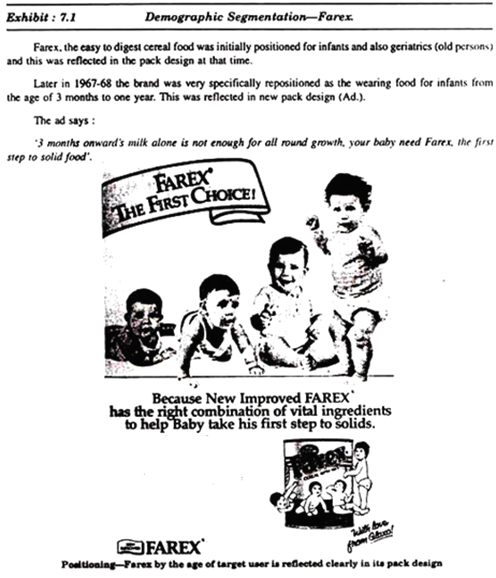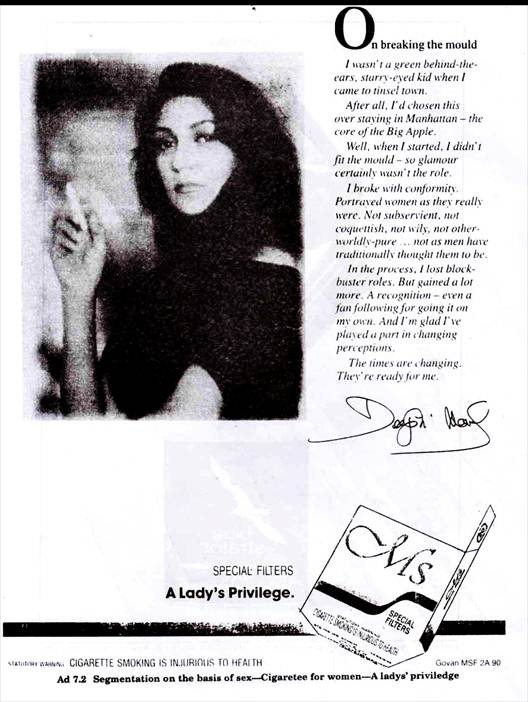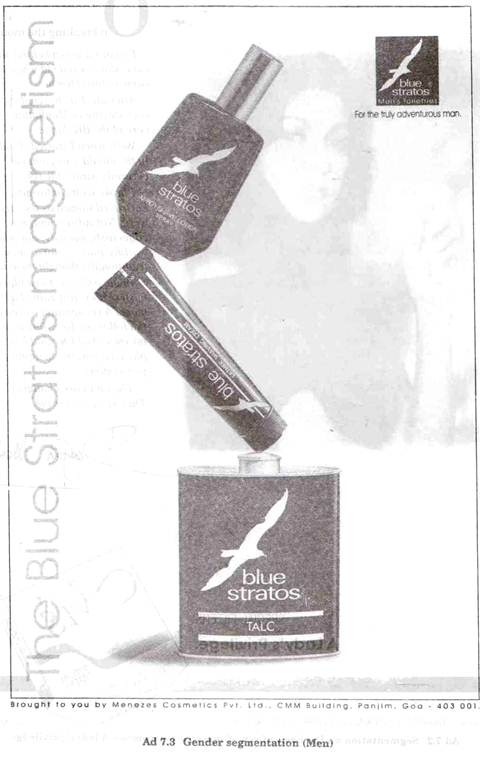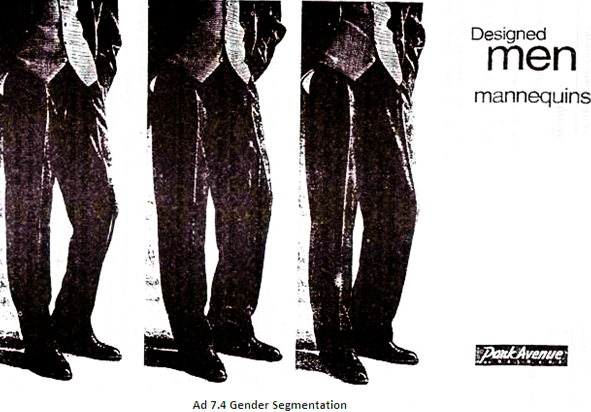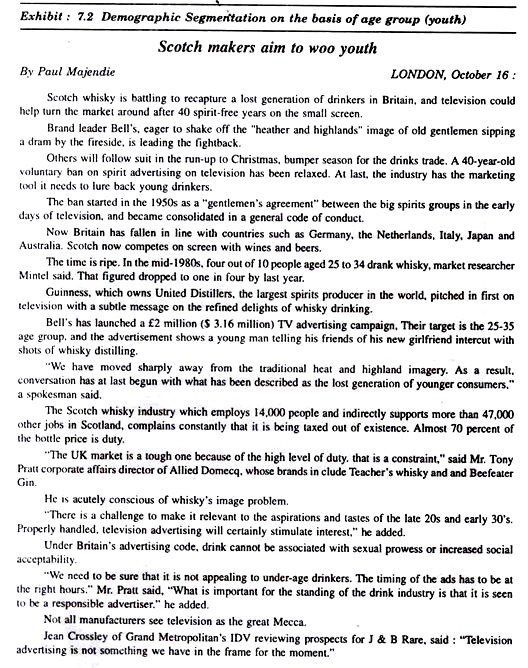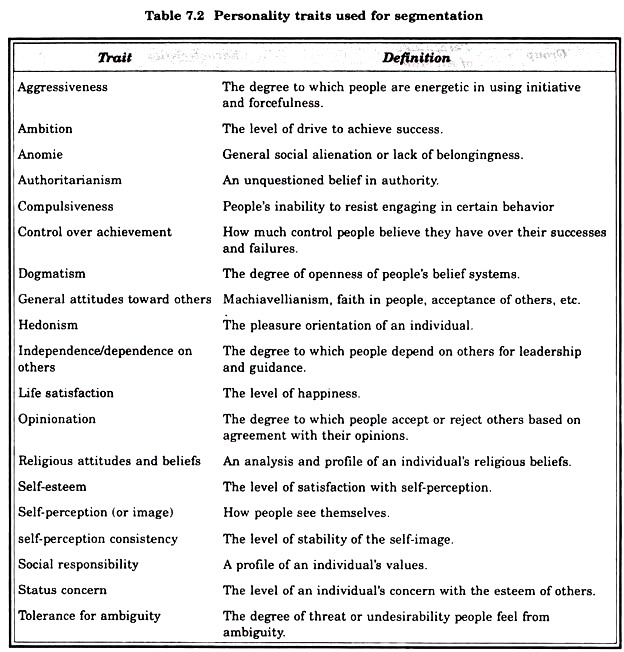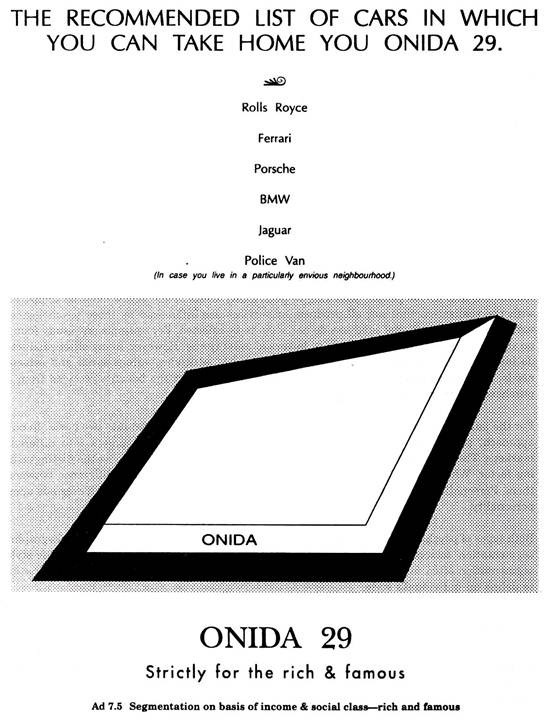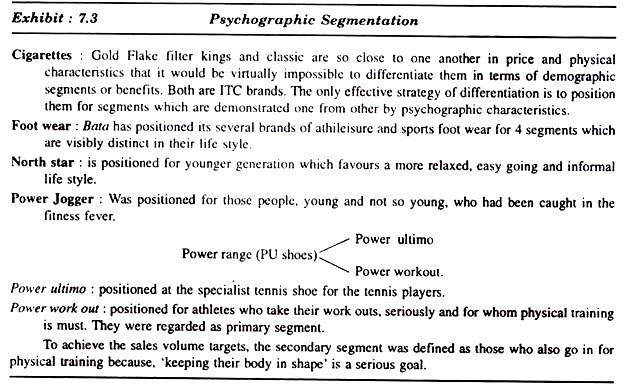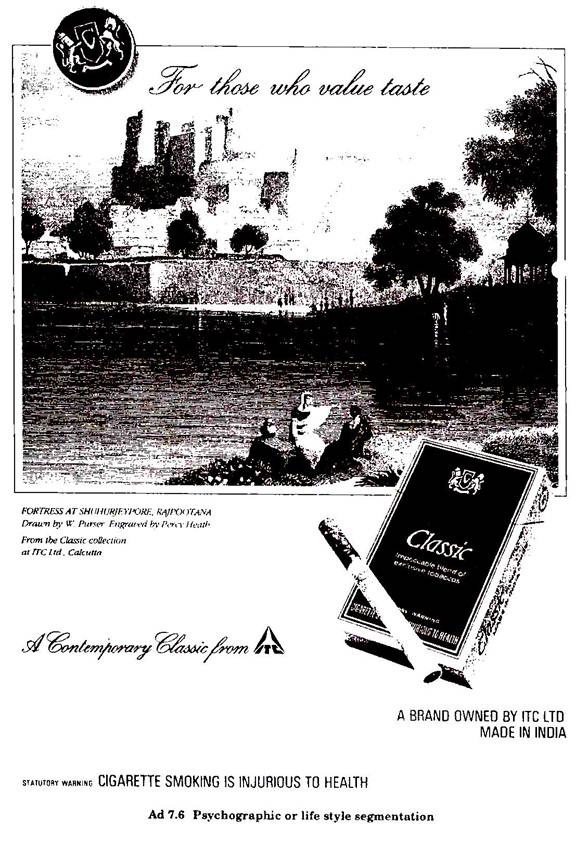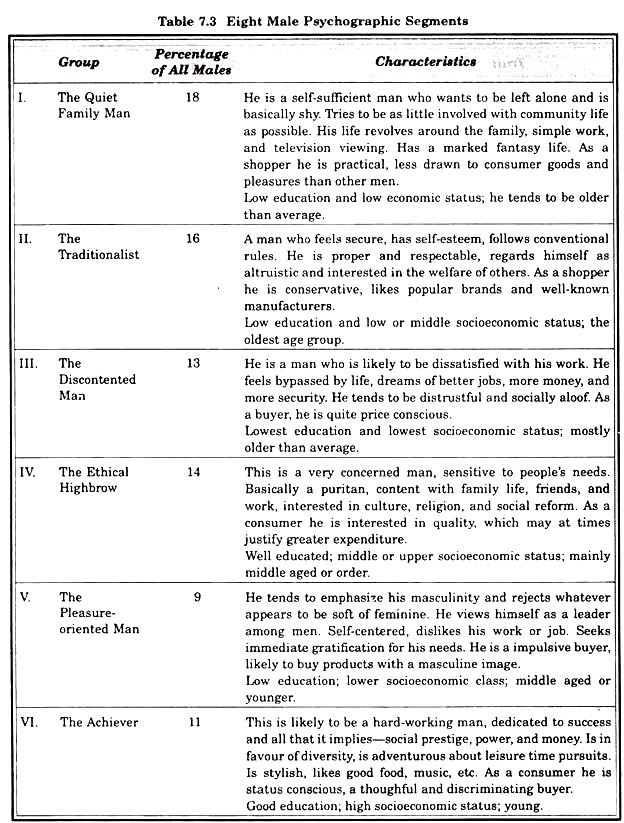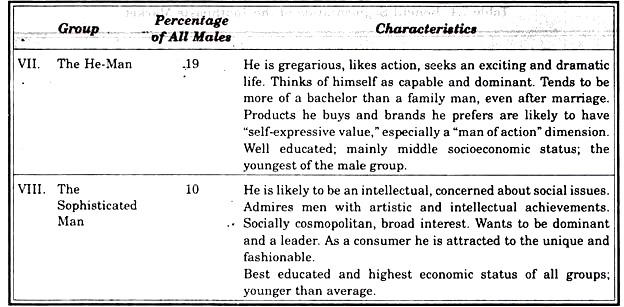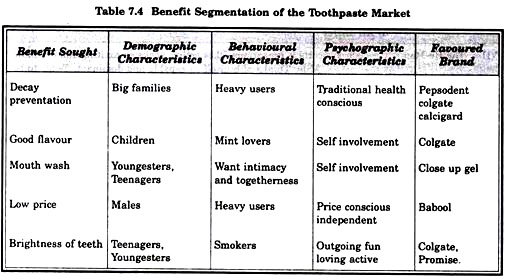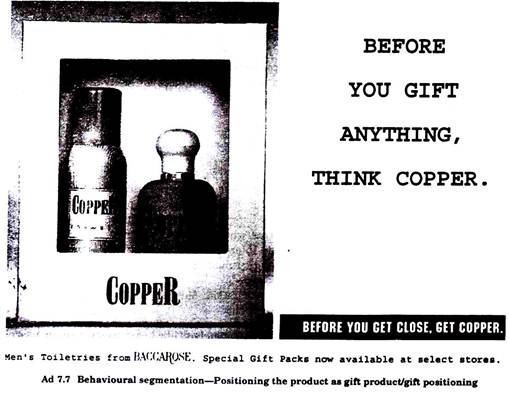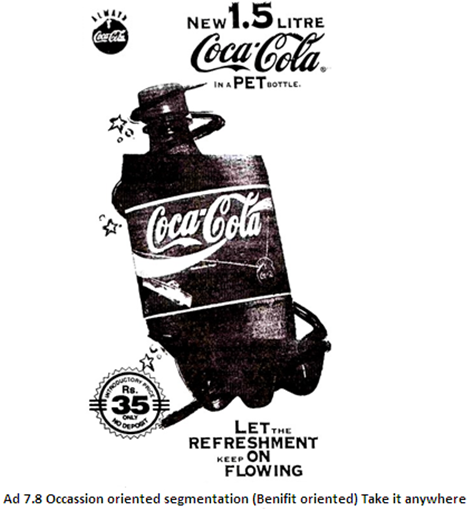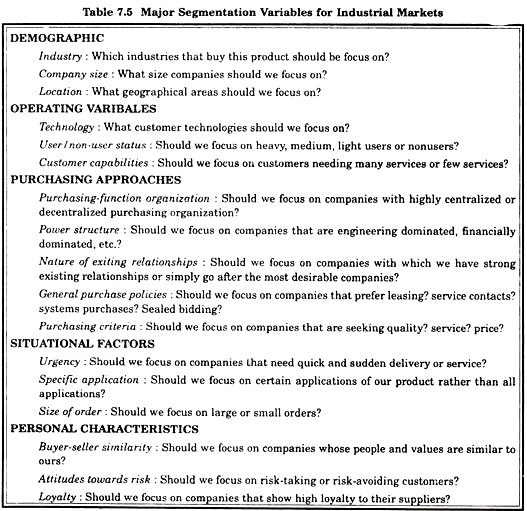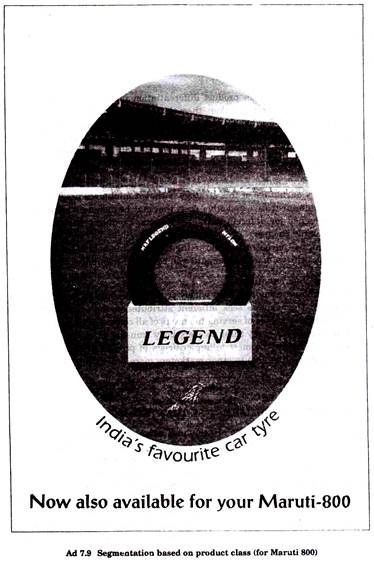A project report on market segmentation in India. This report will help you to learn about:- 1. Introduction to Market Segmentation 2. Meaning of Market Segmentation 3. Market Segments & Niches 4. Consumer Preference Patterns 5. Procedure 6. Bases for Consumer Market Segmentation 7. Bases for Industrial Market Segmentation 8. Criteria 9. Product Differentiation & Market Segmentation.
Contents:
- Introduction to Market Segmentation
- Meaning of Market Segmentation
- Market Segments & Niches
- Consumer Preference Patterns
- Market Segmentation Procedure
- Bases for Consumer Market Segmentation
- Bases for Industrial Market Segmentation
- Criteria for Successful Segmentation
- Product Differentiation & Market Segmentation
Project Report # Introduction to Market Segmentation:
Consumers differ widely in terms of space, time, perception and value. They are not homogeneous. If the market is made up of people whose characteristics and wants are different, the market is heterogenous.
Marketers who wish to do an effective job of marketing to people in such a market must identify the characteristics and wants of different groups of people within the overall market, because one marketing mix will not satisfy all of them. Market segmentation is the process of identifying smaller markets that exist within a larger market.
These groups are called market segments. Market segmentation helps marketers develop marketing mixes for individual segments. Market segmentation helps marketers develop marketing mixes that are more specifically tailored to the characteristics and wants of people in the segments that are identified and selected as target markets.
Project Report #
Meaning of Market Segmentation:
“Market segmentation breaks the larger heterogeneous market into small homogeneous segments. The elements of each smaller segment are more similar in terms of wants, needs and behaviour than the total market is. A separate marketing programme is developed to best much each segment, individual needs and wants.” SCHEWE AND SMITH
“The process of taking the total heterogeneous market for a product and dividing it into several sub market or segments, each of which tends to be homogeneous in all significant aspects”. W.J.Stanton
“Market segmentation is sub-dividing a market into distinct and homogeneous subgroups of customers, where any group can conceivably be selected as a target market to be met with distinct marketing mix”. Phillip Kotler
Segmenting isolates consumers with similar life styles, needs and the likes and increases our knowledge of their specific requirements. The more marketers establish this common ground with consumers, the more effective they will be in assessing these requirements in their communication programmes and informing and/or persuading potential consumers that the product or service offering will meet their needs.
Project Report #
Market Segments & Niches:
Market segments are large identifiable groups within a market, but a niche is a narrowly defined group that may seek a special combination of benefits. As the market segment is larger and more general than the market niche, there are more competitors in market segment than the niche. As the marketer subdivides a market by introducing more defining characteristics, the segment tend to devolve into a set of niche.
For example, Reebok has segmented market into three following divisions:
(a) Sports wear like T-shirt, caps, tracksuits etc.
(b) Sport shoes.
(c) Sport equipment like cricket bats, tennis racket etc.
Sport shoe segment is further divided into 4 sub-segments called as niche:
Niche 1. Tennis shoes.
Niche 2. Cricket shoes.
Niche 3. Jogging shoes.
Niche 4. Golfer’s shoes.
Characteristics of Niche:
1. The customer in a Niche have a district and some what complex set of needs.
2. They are ready to pay a premium to the firm best satisfying their needs.
3. To be successful, the niche marketer need to specialise in his operations.
4. A Niche leader is not attracted by competitors.
Project Report # Consumer Preference Patterns:
Markets are made up of buyers who differ in their buying habits, buying attitudes, sex, income, geographic location etc. All these variable can be used to segment a market. Apart from these, buyers can be segmented on the basis of their preferences.
For example if we want to segment the tooth paste market on the basis of two attributes say freshness and tooth decay prevention, we can find out the preference level of our tooth paste (Fig 7.1).
Fig 7.1 illustrates that three types of preference pattern may emerge:
(a) Homogeneous Preference
(b) Diffused Preferences
(c) Clustered Preferences.
(a) Homogeneous Preferences:
If all the customers show the same level of preference based on these two attributes, it is called as homogeneous preferences (Fig. 7.1 (a)). The market shows no natural segments.
(b) Diffused Preferences:
At the different extreme, the consumer preferences may be scattered through-out the space and it looks that no customer have same intensity preference for these two attributes in a tooth paste. (Fig. 7.1 (b))
(c) Clustered Preferences:
The third category may be that preferences are clustered in groups which are called as natural market segments (Fig. 7.1 (c)). Here the firm has three options for positioning.
The firm might position its brand hoping to appeal to all groups (undifferentiated marketing), It may position in the largest market segment (concentrated marketing) or it might develop several brands, each positioned in a different segment (differentiated marketing).
Benefits of Market Segmentation:
Market segmentation is a customer oriented philosophy. We first identify the needs of customers with in a segment and then satisfy those needs.
Benefits offered by segmentation can be summarized as follows:
1. By developing strong positions in specialised market segments, medium sized firms can achieve a rapid growth rate.
2. By tailoring the marketing programmes to individual market segments, marketer can do a better marketing job and make more efficient use of marketing resources.
3. People awareness is increasing in relation to their preferences. In these circumstances it is necessary that marketer must segment and then try to fulfill the needs of that segment.
4. It helps in determining the kinds of promotional devices that are effective and also helps to evaluate their results.
5. Appropriate decision making, relating to introduction of new products, promotion, distribution, pricing could be easily taken.
Limitations of Market Segmentation:
While market segmentation can provide a lot of benefits, this strategy has some drawbacks with respect to cost and market coverage.
1. Market segmentation can be an expensive proposition in both production and marketing of products. From marketing point of view, the marketer has to develop different marketing mixes for different segments. In production, producing in mass quantities is much cheaper than making variety of products.
2. Other expenses like keeping adequate inventories of each style, colour, promotional expenses also go up because different promotional mixes have to be formulated for different elements.
3. Administrative expenses also go up because marketer must plan and implement several different marketing programmes.
Project Report # Market Segmentation Procedure:
It is not possible to develop the marketing strategies for every consumer. Rather the marketer attempts to identify broad classes of buyers who have the same needs and wants and will respond similarly to a marketing action. Market segmentation is dividing up a market into distinct groups that (a) have common wants, (b) will respond similarly to a marketing action.
The segmentation process involves following (Fig. 7.2) distinct steps:
Step – I:
Survey Stage:
The researcher conducts interviews with the consumers to take the responses from them relating to their motivation, attitudes and behaviour. For conducting the survey, the researcher prepares a questionnaire and apply it to the some of potential customers.
Step – II:
Analysis Stage:
After collecting the responses from the respondents the next stage is to turn them into meaningful form through analysis using factor analysis. After that the researcher applies cluster analysis to make strata of homogeneous responses.
Step – III:
Profiling Stage:
Each homogeneous cluster is now profiled in terms of its distinguishing attitudes, psychographic, geographic, demographic and consumption habits. Each segment can be given a differentiating name.
Project Report # Bases for Consumer Market Segmentation:
Market can be segmented into various segments by using different bases. Bases of market segmentation can be broadly divided into two broad categories. Consumer characteristics (consumer segmentation) and consumer responses (product related segmentation). The following chart and table 7.1 gives the details of available bases for segmentation.
Consumer Related Segmentation:
This basis of segmenting market involves segmentation based on consumer characteristics as geographic, demographic and psychographic characteristics.
(a) Demographic Segmentation:
Under this method, the consumers are grouped into homogeneous groups in terms of demographic similarities, such as age, sex, family life cycle, income, education, occupation, religion and ethnic background. The basis is considered to be more purposeful since the emphasis ultimately rests on consumers.
While demographics may still be most commonly used method of segmenting markets, it is important to recognise that other factors may be the underlying basis for homogeneity and/or consumer behaviours. For example, as noted by Robert Rueff, consumer attitudes and behaviours are not demographically driven and in many cases are not even demographically related.
In addition broad demographic segments such as the commonly used breakdowns 18-34 and 35-39 may include costumers who behave very differently. 15 years old has very different life style from 34 years old and may have different needs & wants as well. The astute member will identify additional bases for segmenting & will recognize the limitation of demographics.
(b) Geographic Segmentation:
Geographic location is the usual and popular basis for market segmentation. For planning and administrative purposes the marketer will often find it convenient to sub divide the country into areas in a systematic way. Geographic segmentation may be on the basis of region, country size, density and climate.
Many geographic characteristics can contribute to buyer segmentation. Various regions of the country exhibit different life style and pattern of behaviour. The climate in different part of the country often makes a difference.
City size can affect buyer’s want. Even different location within the same city or suburb can produce consumer differences. Any geographic split of population that also divides consumers into groups with homogenous needs can be important to the marketer.
The clear cut concentration on the age of the user, accompanied, with the strong idea of milk being not enough at the stage, gave the brand a very distinct repositioning decision. The sales volume doubled with in the first three years alone. Later the brand was over taken by cerelac (Nestle) because the product features and benefits of cerelac were considered by mother to be superior.
(c) Psychographic Segmentation:
Also called as life segmentation, buyers are divided into different groups. On the basis of social class, life style and personality characteristics. People within the same demographic group can exhibit very different psychographic characteristics.
For some type of products, psychological characteristics connected with individual personality or life style influence the benefits that person will derive from marketing mix. When these psychological variables are important to a buyer’s purchase decision the marketer must consider them in grouping consumers into market segments.
The enthusiasm generated for techniques that divide people according to personality traits or life styles must be tempered with the realisation that not all products or services are influenced by these psychological variables. Basic functional products do not seem to be affected.
For example one study found no significant personality differences in buyers of toilet tissue. However, many other products do involve an individual’s ego or self perception, goals, attitudes, values social and esteem needs, and personality in such a way that these factors affect the benefits received from a purchase and therefore the purchase decision.
In one approach, personality traits provided the basis for segmenting consumers into different market’s. The other psychographic approach uses an individual’s life-style as the distinguishing factor. While the two approaches are same, there is one important difference between them. Personality is a more basic or fundamental concept than life- style which depends upon personality.
Both types of psychographic segmentation are often combined with demographic or geographic segmentation factors to present a more detailed picture of the buyer. In fact life-style segmentation often uses a combination of personality traits and demographic characteristics to define an individual’s style.
Personality Characteristics:
Table 7.2 lists nineteen personality traits that marketers might use to help segment consumers. Many other could have been listed, and those selected for testing depend on the product, service or idea to be marketed. In addition, personality traits are often given different labels to make them more descriptive of the consumer.
The use of personality traits for psychographic segmentation has been successful in several studies. One study attempted to identity the characteristics of self service customers by comparing them to full service customers. The self service customer was found to be more price sensitive, more innovative in adopting the using products, and less dogmatic in nature.
Another study attempting to identify the readers of new car advertisements, also found that personality characteristics played an important role.
Compared to other people, the advertisement readers were higher in innovativeness, lower in general self confidence, higher in driving experience, higher in product interest, and higher in venture someness. Other studies have used personality traits to segment the markets for coffee, tea, beer, soft drink, lipstick, stomach remedies, and fashion innovations.
In all the studies where personality traits were found to be significant identifying consumer market segments, the benefits received by the consumer tended to be psychological as well as functional.
For these types of products, psychographic segmentation can be extremely effective, but there are indications that sales of many basic, large selling consumer items do not vary with the psychological characteristics of the consumer.
Behavioural Segmentation:
Under Behavioural Segmentation, the buyers are divided into groups on the basis of their knowledge, attitude, use or response to a product. Many marketer believe that behavioural variables are the starting point for constructing market segments.
(a) Occasion:
Consumers can be distinguished according to occasions when they develop a need. It helps firm expand product usage. For example, occasion may be regular, frequent, special etc. Buyers can be classified on the basis of the occasion which they use the product e.g., talcum powder is used after a bath, after a shave or before moving out for work.
Thus, a certain brand can be promoted as ‘something’ that completes our bath. Occasion segmentation can expand product usage. Formerly, thermas flask were used only to carry tea/coffee to patients of the hospitals. They are now promoted as picnic campaigns, lunch and dinner companions.
(b) Benefit:
In purchasing products, consumers are generally trying to satisfy specific needs and/or wants. These consumers are looking for specific benefits that products might provide in satisfying these needs. The grouping of consumers on the basis of attributes sought in a product is known as benefit segmentation, a widely utilized basis for many products.
(c) User Status:
Market can be segmented on the basis of non-user, ex-user potential user, first time user or regular user. Social agency pay close attention to this type of segmentations. Terrorists are shown on television and their views are asked about their life with the message to give up terrorism.
Every product is used by some and not used by some other. The users and non-users are important for the company. Non-users can be the users of competitive products. There can be ex-users for a product.
First time users have just started using the product many in the target group are potential users—all M.B.A. Students who opt for optional advertising paper are potential user of this text book. Marketers are interested in converting non-users into users. Potential users and regular users require different marketing approaches.
(d) Usage Rate:
Also called as volume segmentation. Markets can be segmented on the basis of light, medium and heavy user of the product. For beverages and liquors, buyers are classified into segments like heavy users, medium users and light users. Heavy users account for volumes.
Many companies target their marketing effort at this segment. The heavy users have their own profile in terms of demographic psychographic and media habits.
(e) Loyalty Status:
Consumer loyalty may be used as a basis for market segmentation, loyalty segmentation enables marketer to modify the promotional mix to retain the loyal customers, to attract the new customers. To measure the brand loyalty is not easy.
The customers normally show four types of loyalty status:
(i) Hard core loyals
(ii) Soft core loyals
(iii)Shifting loyals
(iv) Switchers
(i) Hard Core Loyals:
Consumers who buy one brand all the times. If they purchase “A” brand they will purchase brand “A” all the times. If brand A is not available then they will wait until that particular brand becomes available. Their buying pattern is AAAAA.
(ii) Soft Core Loyals:
Consumers who are loyals to two or three brands. The buying pattern would be AA BB A BB AA. Here the customer have the loyalty with two brands.
(iii) Shifting Loyals:
Consumers shift from favouring one brand to another brand. The buying pattern would be AA A BB CCC DD suggesting that customers are shifting loyalty with one brand to another.
(iv) Switchers:
They are no loyals. They do not show any loyalty towards any brand. Switchers can be deal prone or variety prone. Deal prone means that customers can be influenced by incentives the marketer gives and variety prone means that if variety is offered to them they will prefer that brand.
In India, Razor blades market and tooth pastes market and to some extent toilet-soaps market is highly brand loyal. It is difficult to gain market share for new companies. The entry in this market for new comers is difficult.
A company can make an analysis of its brand loyal customers to determine its target market. For instance, Colgate buyers are more middle class larger families who are health conscious. The study of soft care loyalty gives an indication to nature of competition. Possibly, Colgate finds that Colgate buyers also use other toothpaste brand.
By making use of direct comparison advertising, Colgate can improve its position. Brand shifters indicate our own marketing weaknesses. Non-loyals can be put on our brand by winning them. Brand loyal purchases may be due to other variables like price, habit, indifference or non-availability of other brands.
(f) Buyer Readiness Stage:
The people readiness stage means how much ready a person is for purchasing the ‘particular brand. He may be unaware, aware, informed interested, desirous, intending to buy etc. People at a given point of time are in different stages of readiness to buy a product.
They are either totally unaware aware. Some are informed and some interested. There are some who have a desire to buy or some who intend to buy. The quantum of these group determine the marketing programme.
To create an awareness of cancer is the first step in advertising before people can come forward for a check-up. Later cancer check results are so dramatized that more people desire to have them. Infrastructure is created to handle the motivated individuals for check-ups. In other words, the marketing programme is tailored to the distribution pattern which changes depending upon the readiness of buyers.
(g) Attitude Towards the Product:
Customer in a market can be classified by their degree of enthusiasm for the product. Five attitude classes can be distinguished as—enthusiastic, positive, indifferent, negative and hostile. Vast reminder work for enthusiastic people.
Positive attitudes are reinforced. Neutral people are carefully converted. Negatively inclined and hostile people are difficult to tackle. The attitudes are co-related with demographic descriptors.
Project Report # Bases for Industrial Market Segmentation:
Industrial markets can be segmented using almost the same variables employed in consumer market segmentation. Bonoma and Shapiro proposed the classification of segmentation variables for the industrial market in Table 7.5 they suggested that demographic variables are most important, followed by operating variables and then so on.
Project Report # Criteria for Successful Segmentation:
For segmentation to be successful four basic criteria must be met:
1. Substantiality:
The segments must be large enough to permit a viable market effort directed towards them.
2. Nature of Demand:
Strata (Segments) must exhibit differences in consumption rate among the segments.
3. Response Rate:
The segments must exhibit differences in responses to the marketing variables.
4. Accessibility:
The segments must permit the firm to direct successfully different marketing efforts toward the segments.
Project Report # Product Differentiation & Market Segmentation:
Product differentiation and market segmentation are the two basic strategies that a seller may use in approaching a given market. In product differentiation, the marketer goes after the whole market, but attempts to distinguish the company’s brand from its competitors through the use of unique product features or advertising claims alone.
In market segmentation, often referred to as target marketing, the marketer isolates a segment of the market and directs the marketing effort toward this segment alone. Product differentiation is also referred to as undifferentiated marketing, market aggregation and market combination.
It is an appropriate strategy when:
(a) Markets are indeed homogeneous,
(b) Subdividing the market into smaller segments is not economically/feasible, and
(c) In new market with little competition where market growth often exceeds production capacity.
In many markets a number of similar products compete for consumer sales. For all practical purposes, the products are identical in function and may be used interchangeably. A firm faced with this kind of competitive situation may attempt to create consumer preference by using unique advertising techniques of modifying the product so that it appears different and can be distinguished from competitive brands.
If applied effectively product differentiation can be successful in creating sales and increasing market share. This is particularly true when the differentiated claim makes sense to consumers and is consistent with what they believe to be important in terms of product performance.
Under this strategy, a firm chooses not to recognize the possible existence of market segments. Instead, the seller designs a product that will appeal to most buyers, and directs its promotional activities to the whole market.
Often in the face of stiff competition, the firm may attempt to create consumer preference for its brand by making unique advertising claims, or by modifying the brand in some insignificant way so that it appears different and can be distinguished from competitive brands.
Market segmentation differs from product differentiation in that the marketer recognizes market segments and deliberately taken them into consideration in devising marketing strategies.
As the markets are heterogeneous, the market for a particular product type is often composed of several consumer sub markets each with some different product expectation and needs. Market segmentation is the development of a different marketing approach for each identifiable market sector.
Merits of Product Differentiation:
1. The primary advantage of this strategy is that it minimizes production, promotion, inventory, administrative and other costs that may be increased by producing several brands designed for different market segments. Producing one brand rather than many is simply cheaper.
2. In addition, by concentrating marketing expenditures behind a single product, the brand may achieve market domination in consumer awareness and sales.
Demerits of Product Differentiation:
1. Product differentiation had been widely criticized because of its failure to recognise that different consumers seek different attributes in the products they purchase. Few brands are capable of serving the needs of all consumers equally well, and those that attempt to be “everything to everybody” run the danger of becoming “nothing to any one”.
By far the most telling criticism of product differentiation is that the brand become vulnerable to other marketers more sensitive to consumer needs.
